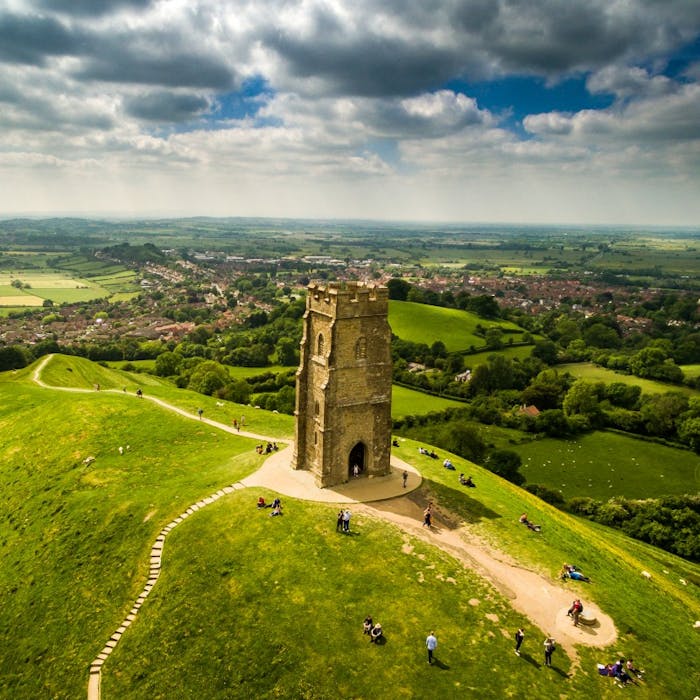
Glastonbury, town of ancient myth (and recent music)
Glastonbury is a small town in Somerset best known for the famous music festival that takes place nearby, as well as numerous Arthurian and Christian legends centred on the town and its distinctive hill, the Tor.
Glastonbury sits at the foot of Glastonbury Tor, a distinctive, conical hill rising up from the Somerset Levels topped by the roofless St Michael's Tower. It can be seen from miles away, across the county. Mist often gives the hill the appearance of an island, and it is associated with the Celtic myth of Avalon, the Isle of the Dead, to which King Arthur is supposed to have been taken by barge after his death.
As the Levels would once have been swampy fens, the Tor would, indeed, have been an island thousands of years ago.
The area has been inhabited for a long time. 6000 years ago people built wooden trackways across the marshes to aid travel and hunting.
There is an old myth that Joseph of Arimathea visited the town, possibly with the young Jesus. These stories, as well as those of King Arthur, helped to make Glastonbury Abbey the richest monastery in England at the end of the Saxon period and second only to Westminster at the close of the middle ages.
The Holy Thorn which grows at Glastonbury Abbey has become part of the legend of Joseph of Arimathea. According to the story when Joseph arrived in Britain he landed on the island of Avalon and climbed up Wearyall Hill. Exhausted, he thrust his staff into the ground and rested. By morning his staff had taken root and it grew into the miraculous thorn tree which flowers every Easter and Christmas.
In 1191, the monks announced that they had found the bodies of King Arthur and his Queen buried on the south side of the Lady Chapel. In April 1278 their remains were removed in the presence of King Edward 1 and Queen Eleanor to a black marble tomb within the abbey itself. The tomb survived until the dissolution of the abbey in 1539 by Henry VIII.
The last abbot of Glastonbury, Richard Whiting was hung, drawn and quartered on Glastonbury Tor.
Atmospheric ruins of the once-grand abbey remain today, and visitors to the town can enjoy these, as well as the views from the top of the Tor, several "magical sites" and some fun New-Age trinkets in the local shops.
The Glastonbury Music Festival takes place every two years in fields nearby and first began in 1970.
Further reading
Links to external websites are not maintained by Bite Sized Britain. They are provided to give users access to additional information. Bite Sized Britain is not responsible for the content of these external websites.
